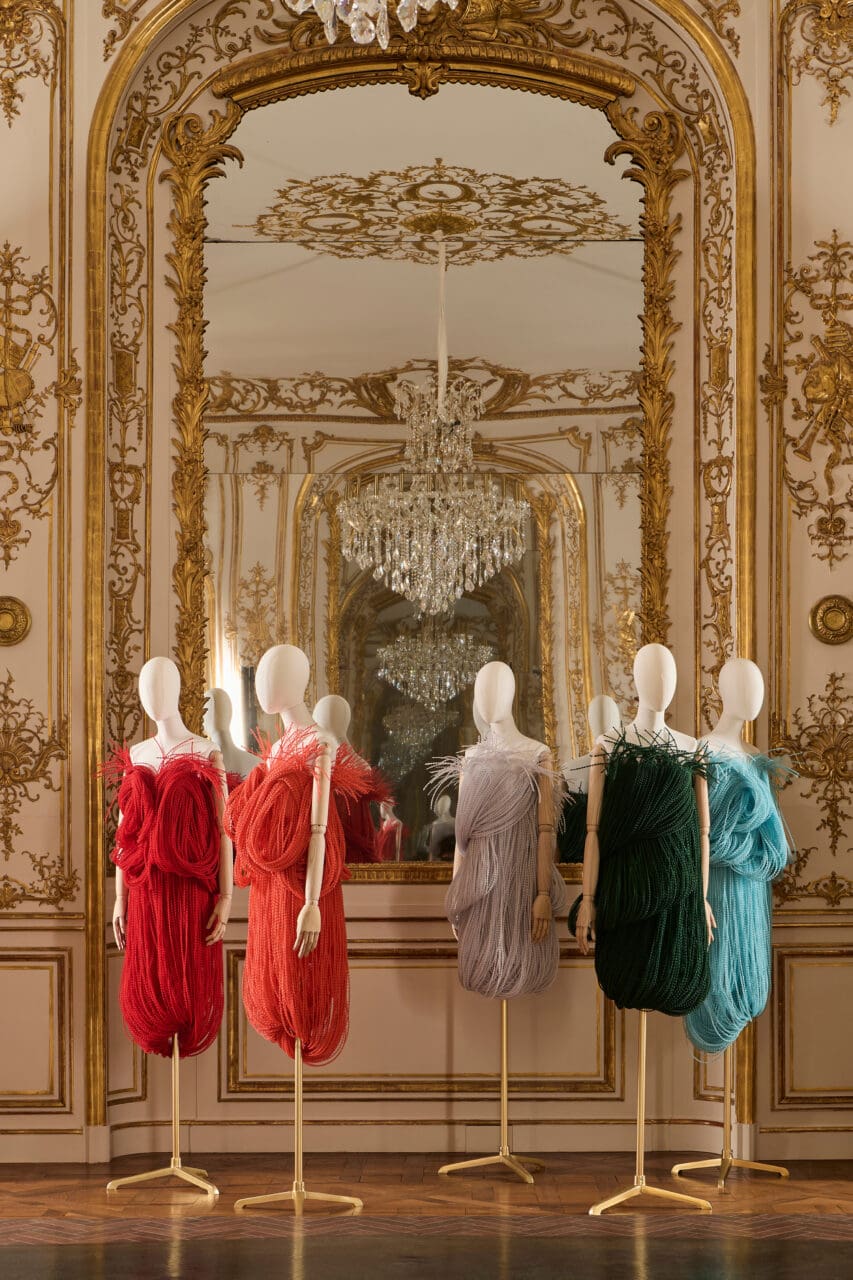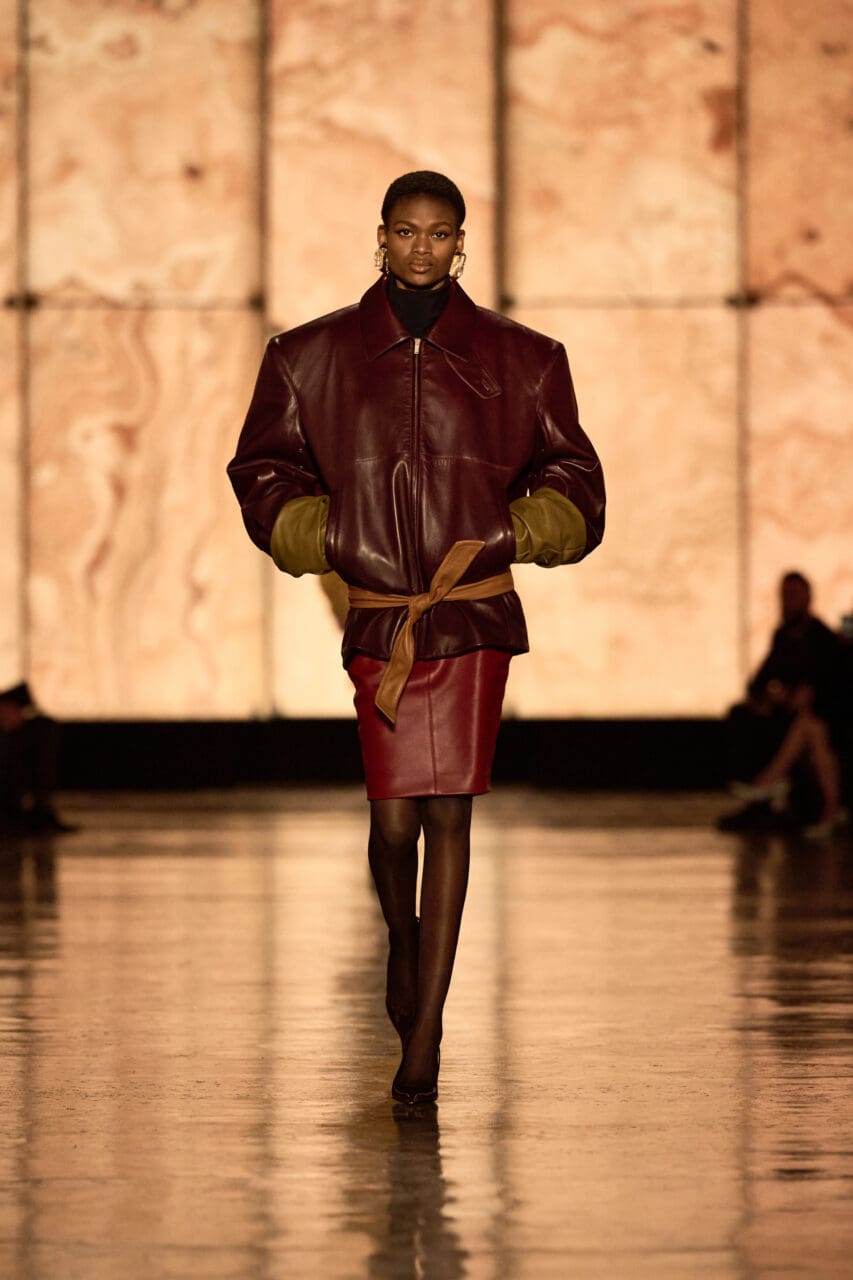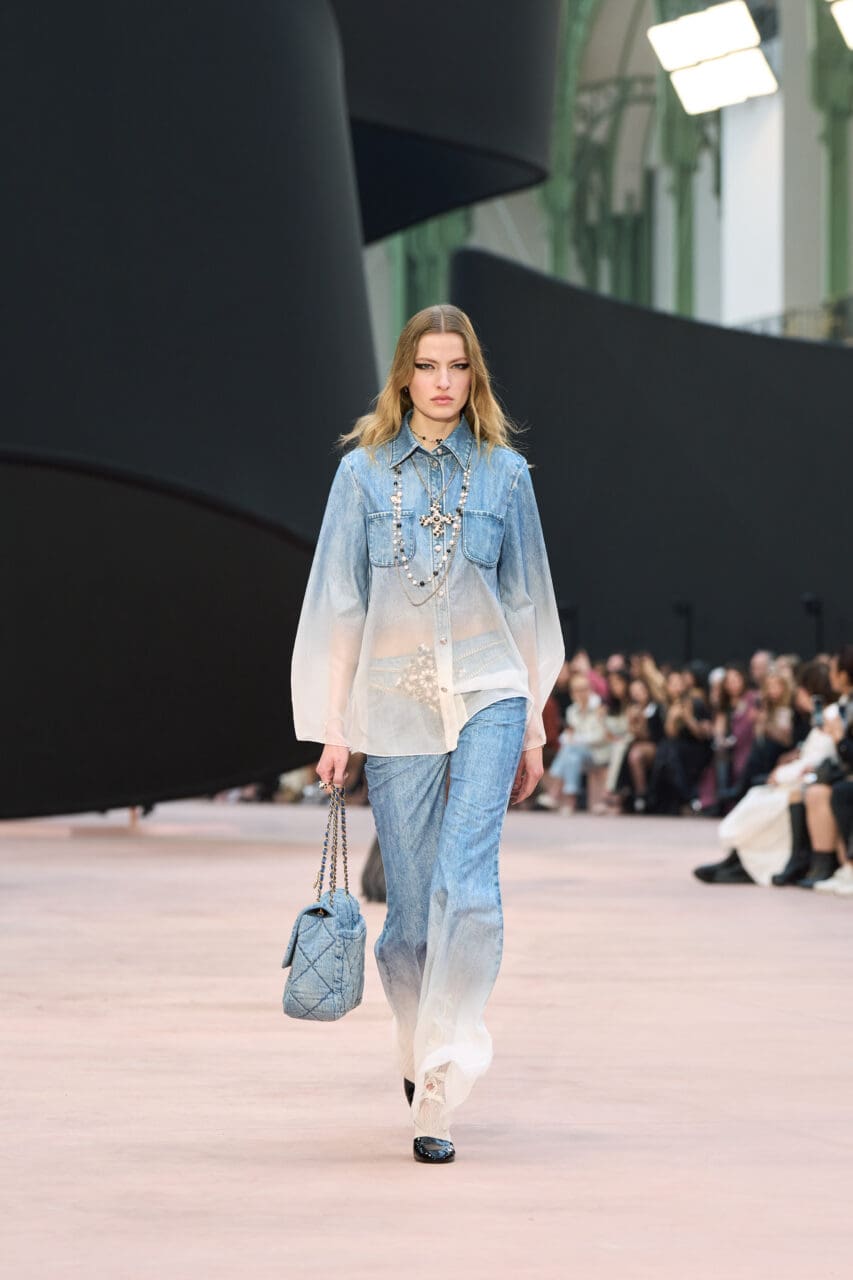“It’s a bit like the ghost of fashion,” said Jonathan Anderson. “This idea of the past and where we are now. Couture classicism meeting something which is new.”
Anderson was out to trick the eye of the internet with his Loewe “ghosts”—simple white duchess satin shifts over-printed with blurry images of 1940s, maybe ’50s cotton frocks, a mackintosh, a fur coat. Each had blank margins. “Printing a garment on a garment is not a new thing. But I was fascinated about the psychology of how we ultimately see things online. The blurry aspect in motion looks like a glitch,” he said. “It’s out of focus. Is it staged, or not staged? Is it the right color, is it photoshopped?”
One of the reasons that Anderson is up there among the most significant designers of today is that he has such a sharp instinct for drawing attention to timely, complicated questions—in this case, the hyper-awareness he has of simultaneously creating an event for a small number of people real time, whilst also factoring in how it will be perceived by the much bigger audience watching his every move on screens.
What’s real, and what’s fake? And more to the point, what’s constructive that can come out of that question? Anderson had fun with that, warping anachronistic haute couture techniques and generic dress types to make ‘T-shirts’ and ‘jeans’ entirely of goose-feathers, and three strapless velvet cocktail dresses calculated to look flat and normal on screen, but which had a stiff, tubular stand-away volume in reality.
There was more eye-trickery when a couple of ‘ordinary’ cardigans—one pink, one turquoise—turned up: in fact, they’d been printed out on adhesive paper, and literally stuck on the models’ skin. Then there were tiny, seamlessly molded jackets, which Anderson described as “like Playmobil.” Unless you touched them, you’d hardly realize they’d actually been made from super-fine leather, vacuum-formed the same way as luxury car upholstery. Maybe not even then.
Pushing techniques until they aren’t what they seem, through a combination of traditional skills, new technologies and a searching imagination is something that only a top-notch modern luxury house can do, of course. Still, for Anderson, the point of showing all of that facility was to drive beyond surreal effects. “How do you go out of a surrealist aspect to something which is more about how we see clothing now? I think it’s kind of like a type of reduction,” he said. “Wanting to refine, and refine.”
Simplicity: of course, this is also a value that’s also suddenly at the center of attention this season. It’s another key to Anderson’s mastery as a creative director that alongside the internet-detonating sensations in his collections, he’s always put his finger on perfect, uncomplicated clothes and multiple inventions and iterations of bags and accessories that are magnetically desirable and wearable.
“I’ve been 10 years here at Loewe. You kind of you start to be like, ‘Well, ‘what is that next chapter like?’” His answer this season was to go fully into the fine leather and suede which are the brand’s heritage. “I feel like in the beginning that was something that I kind of went away from,” he said. “Whereas now, it’s about implementing it back in.”
He had some fun with that, too: a brown leather shirt was hybridized with a bag, with a hitched-up shoulder strap attached to its tail. Funny. It didn’t distract, though, from all the rest: the perfect leather tank, the long camel suede coat, the giant geometric leather totes, the renewed, retooled long, shallow ‘Paseo’ bag and the deep cylindrical suede shoulder bag that Anderson had found in the archive. Perhaps that’s what he meant when he made that remark at the beginning: the excitement of “classicism meeting something which is new.”
Editor
Sarah MowerCredit
Lead image:Daniele Oberrauch via Gorunway.com





